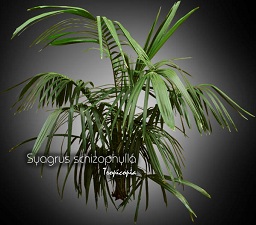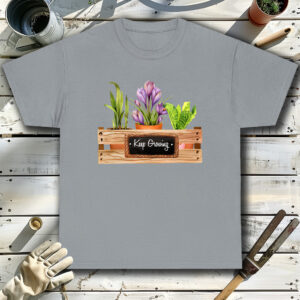Table of contents
Parrot palm

Latin Name: Syagrus schizophylla
Category: Palm
Family: Arecaceae
Origin: Brazil
Climate: Tropical humid
Growing Zones: 11-10
Care Instructions
The Parrot palm (Syagrus schizophylla) is a tropical humid plant that originates from Brazil. This palm plant belongs to the Arecaceae family and is well-suited for growing in USDA zones 11-10.
Complete Care Guide for Parrot Palm (Syagrus schizophylla)
Watering Requirements
The Parrot Palm, known for its strikingly beautiful fronds, thrives best with a consistent watering schedule. It is essential to keep the soil evenly moist but not soggy. During the growing season, which typically spans from spring to early fall, water the plant thoroughly when the top inch of soil feels dry to the touch. In cooler months, reduce watering frequency, allowing the soil to dry out slightly between waterings. Overwatering can lead to root rot, so ensure that the pot has adequate drainage. A good rule of thumb is to check the moisture level weekly, adjusting based on the humidity and temperature of your environment.
Light Conditions
Parrot Palms prefer bright, indirect light to thrive. While they can tolerate some direct sunlight, especially in the morning, too much harsh afternoon sun can scorch their delicate fronds. Ideally, place your Parrot Palm near a window that receives filtered light or in a well-lit room. If grown outdoors, a location with dappled sunlight or partial shade is ideal. Insufficient light can lead to leggy growth and a decline in overall health, so ensure that your palm receives adequate light for optimal growth.
Soil Preferences
The Parrot Palm thrives in well-draining soil that retains some moisture without becoming waterlogged. A high-quality potting mix that includes peat moss, perlite, and pine bark is ideal for this palm. This combination allows for good aeration and drainage while providing the necessary nutrients. Additionally, consider adding a slow-release fertilizer during the growing season to promote healthy growth. Fertilizing every 4-6 weeks with a balanced, water-soluble fertilizer can help maintain vibrant foliage and overall plant health. Be cautious not to over-fertilize, as this can lead to salt buildup and damage the roots.
Pests and Diseases
While the Parrot Palm is relatively resilient, it can be susceptible to common pests such as spider mites, mealybugs, and scale insects. Regularly inspect the undersides of the fronds and the base of the plant for any signs of infestation. If you notice pests, treat them promptly with insecticidal soap or neem oil, ensuring to follow the product instructions carefully. Additionally, keep an eye out for signs of fungal diseases, which can occur in overly humid conditions. Yellowing fronds or black spots may indicate a fungal issue. Improving air circulation and avoiding overhead watering can help prevent these problems.
Special Care Tips
To keep your Parrot Palm looking its best, consider the following special care tips. First, regularly dust the fronds with a damp cloth to keep them clean and allow for optimal photosynthesis. This practice also helps prevent pest infestations. Additionally, during the growing season, you may want to rotate the plant occasionally to ensure even growth and exposure to light. If you notice any yellowing fronds, it may be a sign of nutrient deficiency or overwatering, so adjust your care routine accordingly. Lastly, be mindful of temperature fluctuations; Parrot Palms prefer temperatures between 65°F and 85°F (18°C to 29°C) and should be protected from cold drafts and extreme heat.








